How do soil and sand get into our streams?
When soil is wet, it moves. Rain, stream currents and waves wear away particles of soil and sand and deposit them in areas where water flow is slow. This is natural. But when we remove diverse vegetation to grow crops or build roads and towns, and when invasive plants minimize diversity in the forest, erosion and sedimentation increase.
What are the effects of erosion?
When soil leaves our fields, we lose a life-giving resource. It also clouds streams, changes habitat and impacts aquatic life. Sediment in cold water streams covers the gravel runs and riffles trout need to spawn and invertebrates need to survive.

Urban
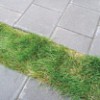 Minimize hard surfaces.
Minimize hard surfaces.Roofs, patios and driveways move water fast, carrying soil, sand and pollutants to streams. Pave less. When you do pave, use gravel, stone, well-spaced bricks, or porous pavers, concrete, or asphalt.
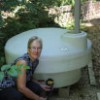 Capture water.
Capture water.Rain water and snow-melt move soil, sand and pollutants to streams. Capture water in rain barrels, rain gardens, cisterns and ponds. Use it in your garden or home.
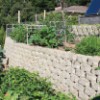 Build terraces.
Build terraces.Our watershed has steep slopes and loess soil, which easily washes away. If you live on a slope, build terraces to hold soil, create more living and working space and minimize mowing.
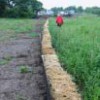 Keep soil in place when building.
Keep soil in place when building.Any project that opens soil to water and wind requires special attention. Before you dig, plan how you’ll keep soil in place until it’s covered and roots are growing again. Take time to follow the plan.
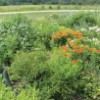 Plant native plants.
Plant native plants.Deep-rooted native plants come back year after year. They keep soil in place, prevent erosion, and also hold moisture, improve soil health and create beautiful shorelines and buffers.
Rural
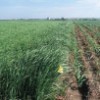 Use continuous living cover.
Use continuous living cover.A mixture of summer row crops, winter annual crops and perennial crops keeps fields covered, adds nutrients to soil and reduces soil and nutrient loss.
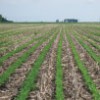 Practice conservation tillage.
Practice conservation tillage.No-till and ridge-till methods reduce soil erosion up to two-thirds. They also improve soil quality.
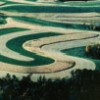 Plant with hill contours.
Plant with hill contours.Grow crops across the slope. Where possible, plant strips of row crops in rotation with forages, small grains or sod, arranged systematically across a field.
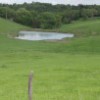 Hold soil with structures.
Hold soil with structures.Prevent field erosion with wellplaced ponds, terraces, grass waterways, grade stabilization structures and buffer strips.
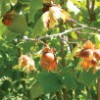 Perennialize marginal land.
Perennialize marginal land.Soil on steep slopes and other marginal land doesn’t hold water, needs more care, and produces lower yields. Perennial crops and native grasses hold soil and can produce, too.

